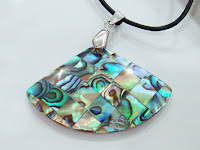 Known in other parts of the world as tarantulas, the South African baboon spider got its local name due to the fact that the last two leg segments resemble the finger of a baboon. These giants of the spider world were first described in South African literature in 1702 and 42 of the 900 species documented worldwide can be found in South Africa.
Known in other parts of the world as tarantulas, the South African baboon spider got its local name due to the fact that the last two leg segments resemble the finger of a baboon. These giants of the spider world were first described in South African literature in 1702 and 42 of the 900 species documented worldwide can be found in South Africa. Baboon spiders grow very large, with body sizes ranging from 13-90mm and a leg span reaching 20cm, and although many have very docile natures, most people will be forgiven for avoiding these arachnids like the plague! Their hairy bodies, with colours varying from brown, black, grey, black or yellow, just add to their nightmare image; yet it is their size, colouring and often docile nature that makes them ideal pets for many collectors and handlers.
Baboon spiders grow very large, with body sizes ranging from 13-90mm and a leg span reaching 20cm, and although many have very docile natures, most people will be forgiven for avoiding these arachnids like the plague! Their hairy bodies, with colours varying from brown, black, grey, black or yellow, just add to their nightmare image; yet it is their size, colouring and often docile nature that makes them ideal pets for many collectors and handlers. Due to this demand for baboon spiders as pets, they are classified as Commercially Threatened in terms of the IUCN protocols, and this restriction prevents baboon spiders from being collected, transported or kept without a permit. Three genera within South Africa are also classified as Protected Invertebrate Animals. They are also desirable as pets as they can live up to 25 years! However, many baboon spiders in captivity die farely quickly from dehydration, the stress of handling and sheer neglect.
Due to this demand for baboon spiders as pets, they are classified as Commercially Threatened in terms of the IUCN protocols, and this restriction prevents baboon spiders from being collected, transported or kept without a permit. Three genera within South Africa are also classified as Protected Invertebrate Animals. They are also desirable as pets as they can live up to 25 years! However, many baboon spiders in captivity die farely quickly from dehydration, the stress of handling and sheer neglect. Theraphosidae can deliver a painful bite, although these bites are not fatal. Their fangs are by far their most dramatic feature, and can extend up to 6mm in length! Much of the pain results from the large fangs piercing the skin, although a neurotoxic venom is also present in one specie from the Western Cape. The Harpactira Lightfooti, which is found predominantly in Cape Town and the Paarl region, has been known to deliver a bite which may result in local burning at the bite site and after 2 hours the person may experience headaches, nausea, vomiting, signs of shock, as well as dizziness and difficulty walking. This specific specie has been known to be fairly aggressive and a number of people have suffered a bite. In general, however, baboon spiders are rarely aggressive and will only bite when provoked. In fact, in most cases the venom is not considered medically relevant, and historically these spiders were enjoyed as a delicacy by the bushmen of Southern Africa, who would roast them over an open fire.
Theraphosidae can deliver a painful bite, although these bites are not fatal. Their fangs are by far their most dramatic feature, and can extend up to 6mm in length! Much of the pain results from the large fangs piercing the skin, although a neurotoxic venom is also present in one specie from the Western Cape. The Harpactira Lightfooti, which is found predominantly in Cape Town and the Paarl region, has been known to deliver a bite which may result in local burning at the bite site and after 2 hours the person may experience headaches, nausea, vomiting, signs of shock, as well as dizziness and difficulty walking. This specific specie has been known to be fairly aggressive and a number of people have suffered a bite. In general, however, baboon spiders are rarely aggressive and will only bite when provoked. In fact, in most cases the venom is not considered medically relevant, and historically these spiders were enjoyed as a delicacy by the bushmen of Southern Africa, who would roast them over an open fire.Baboon spiders are hunters, and catch prey largely by ambush techniques. Their strong, powerful bodies and large fangs allow them to attack and overpower their prey, and their long, thick legs allow them to move fast and catch their food with relative ease.
Love them or hate them, these spiders are fascinating creatures and deserve our protection!






















